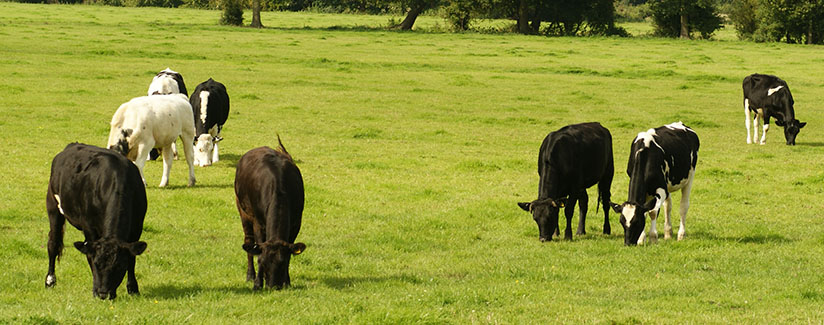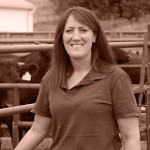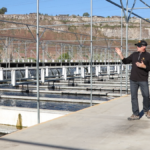
Grass-fed versus Corn-fed Beef: What’s the Difference?
While only about 3 percent of the beef sold in the U.S. comes from cows fed only grass the product is growing in popularity, especially among people who feel strongly about the “buy local” and sustainability movements.
To get an expert’s view of the issue, we talked with Dr. Judith Capper of the Animal Sciences Department at Washington State University and Dr. Christopher Raines*, extension specialist and assistant professor of Meat Science at Pennsylvania State University
Listen to Capper’s comments by clicking here.
Listen to Raines’ comments by clicking here.
What’s the difference between grass-fed and corn-fed beef?
Dr. Capper:
“All beef cattle spend up two-thirds of their lives eating grass. However, for meat to be sold as ‘grass-fed beef’ the animal must have spent its entire life on forage.”
Dr. Raines:
“The only difference is that cattle producing grass-fed beef can never have eaten grain. There are no restrictions on whether the cattle come from high-density stocking areas or if they received veterinary treatment similar to conventionally-raised cattle.”
Are there nutritional differences between grass-fed and corn-fed beef?
Dr. Raines:
“Meat from cattle that are fed only grass can be more lean than their corn-fed counterparts but leaness can be achieved with any production system.”
What is the environmental impact of beef grown on grass compared to conventional beef?
Dr. Capper:
“Cows grow more slowly when grass is all they eat. If all of the beef in the U.S. were grass-fed we would need an additional 64.6 million cows in order to match the amount of beef produced in 2010. That would require an additional 131 million acres of land, which is about 75% of the state of Texas. That many cows would need an additional 1,700-billion liters of water, which amounts to the annual consumption of 46.3-million U.S. households. These cows would generate an additional 135 million tons of carbon which would be like adding 26.6 million cars to the road every year. So, in terms of land, energy, water, and carbon, grass-fed beef has a much larger environmental impact than conventional beef production.”
Does grass-fed beef taste different?
Dr. Raines:
“The taste of beef is determined by how and what the cow is fed. If a farmer manages pasture properly, the taste of grass-fed beef is very similar to beef from conventionally raised cattle. If pasture is not managed properly the taste might be unpleasant.”
Is it more natural for a cow to eat grass instead of corn?
Dr. Raines:
“Corn is a grass. The only difference is the cow is eating the seed of the grass.”
Dr. Capper:
“Cows probably did not eat corn 500 years ago. But does it matter if it’s natural as long as it improves environmental impact, food safety, and beef affordability? Almost nothing we do today is ‘natural’ compared to 500 years ago. We have cars and airplanes. We have treatments for cancer and heart disease. Why is it that in every other business sector we celebrate increased efficiency and productivity thanks to new technology while when it comes to food some want it done the old-fashioned way?”
Follow Dr. Capper on Twitter – http://twitter.com/bovidiva
“jb-cows(2)” by Jusben


























